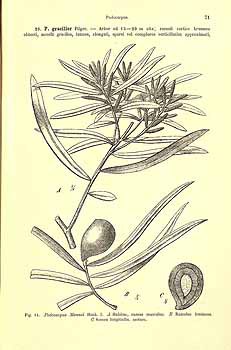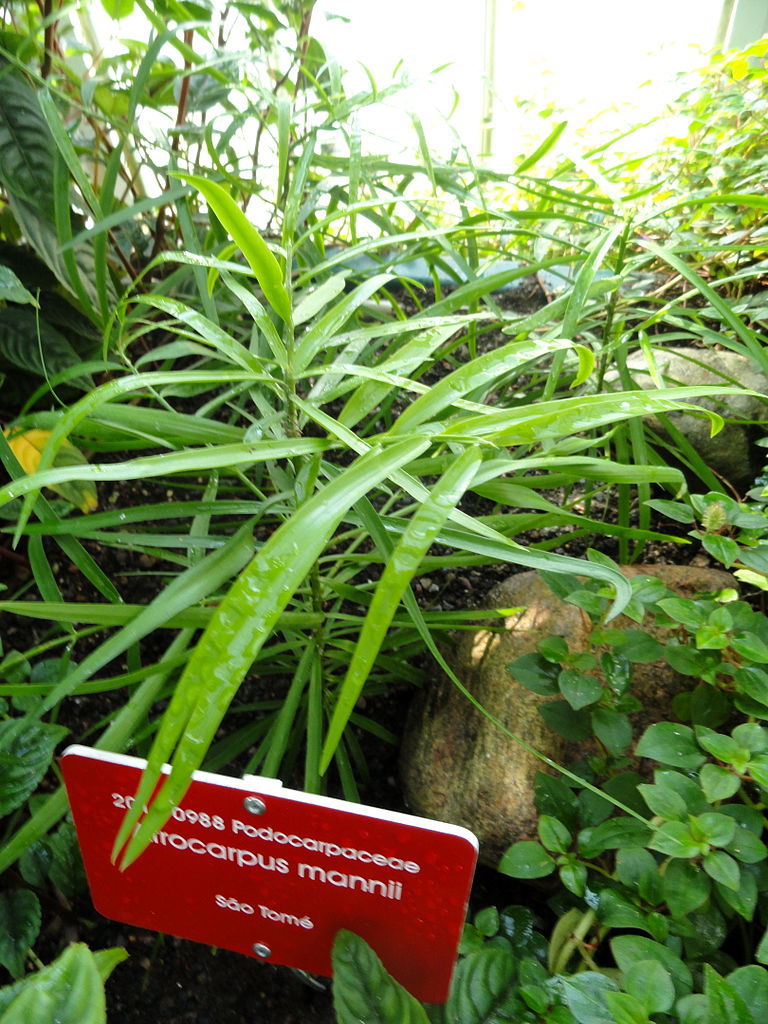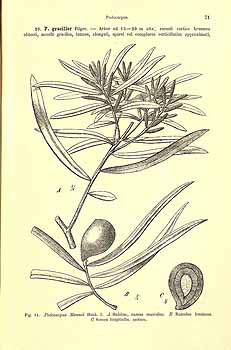
Afrocarpus mannii, first described by Joseph Dalton Hooker (1817-1911) and completed in 1989 by C.N. Page, in New and maintained genera in the conifer families Podocarpaceae and Pinaceae; Notes of the Royal Botanical Garden Edinburgh vol. 45 no. 2. It was formerly classified as Podocarpus mannii. It is commonly known as São Tomé yellowwood. The epithet mannii remembers Georg Mann, who collected the type specimen.
Description. São Tomé yellowwood is a small evergreen coniferous tree, growing 35 to 50 feet (10 - 15 m) tall with a broad crown. It is often seen growing as krummholz at the mountain summits. Twigs are ridged, with a more or less quadrangular cross section. Foliage is sparse. The gray-green leaves are spirally arranged, lanceolate, 2.4 to 3.2 inches (6 - 8 cm) long on mature trees, and larger, to 6 inches (15 cm) long and 0.8 inch (2 cm) broad, on vigorous young trees. The catkin-like pollen cones are 0.6 to 1 inch (1.5 - 2.5 cm) long, solitary or in pairs on a short stem. The seed cones are highly modified, with a single 0.8 inch (2 cm) diameter seed with a thin fleshy coating borne on a short, scaly peduncle.
Distribution. This species is native to the Afro-montane forests of São Tomé Island in the Gulf of Guinea, growing at elevations of 4,200 feet (1,300 m) above sea level up to the summit at 6,500 feet (2,024 m). Its habitat is that of high montane cloud forest.

